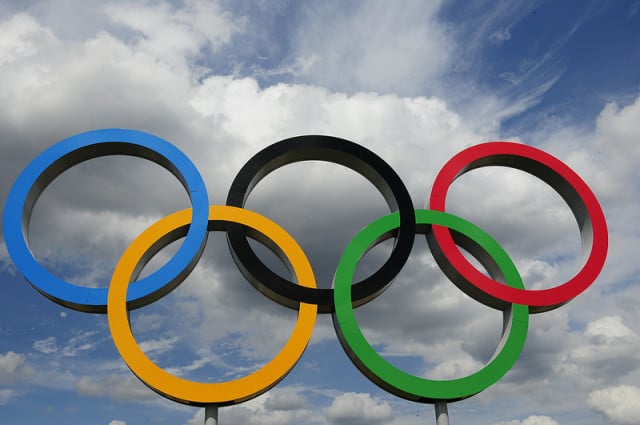
Note to NBC – when you give viewers the opportunity to program their own live Olympics schedule, they will gladly take up the offer.
Although both NBC and the BBC are broadcasting multiple simultaneous live events on the web, the BBC is also pushing those streams out through up to 24 new channels to living-room TVs.
Seventeen million people have used this BBC “Red Button” to watch those streams for at least 15 minutes over the last week, the corporation says.
That means around a quarter of the UK population has delved beyond primary linear TV, toward narrowcast live sport.
What does this tell us about the nature of live, prime-time, linear broadcasting versus narrowcasted alternatives… ?
1. Super-serving slices thick
Firstly, whether they are carrying high-profile or esoteric, little-supported events, all 24 of those channels are being used…

Every one of the 24 channels has seen 100,000 users at some point, according to BBC Sport and London 2012 product head Cait O’Riordan. Although the sheer breadth of simultaneous options might have diluted the audience for each, it appears to have held steady – 100,000 is a considerable audience for narrowcast events.
2. Even bigger than the web
In the same period, the BBC Sport Olympics website has clocked up 18 million unique browsers, peaking at eight million from the UK. That means more UK viewers are engaging with their living-room Red Button than with the website.
The web has become acknowledged as the uber catch-up, choice and depth platform. Audiences just hadn’t yet appeared conditioned to expect, on their TV, the same number of choices presented online…
But the BBC is blurring the platforms. Although all 24 BBC Olympics live streams are being streamed on the BBC’s website, the same IP streams also arrive on the BBC’s Virgin Media and connected TV Red Button platforms.
3. Narrowcast is surviving broadcast onslaught
The BBC has devoted excellent blanket coverage to the Olympics. Three of the UK’s primary linear channels – BBC One, Two and Three – have all but shelved their daytime and evening schedules in place of live events, analysis, interviews, highlights and magazine features. There may be enough material being pumped out of these core channels to satisfy anyone – even those who have missed an event are likely to find highlights looping around any minute now.
But that makes the 24 streams’ performance even more impressive, proving that there is always a passionate audience wanting to go deep, no matter how niche the interest.
4. UK mobile viewing matching U.S.
Last week, an under-pressure NBC said 45 percent of its Olympics IP video streams were to mobile and tablet devices. BBC figures show a similar ratio, with a combined 41 percent. It is fascinating to see mobile viewing consistently high in two entirely different timezones…
